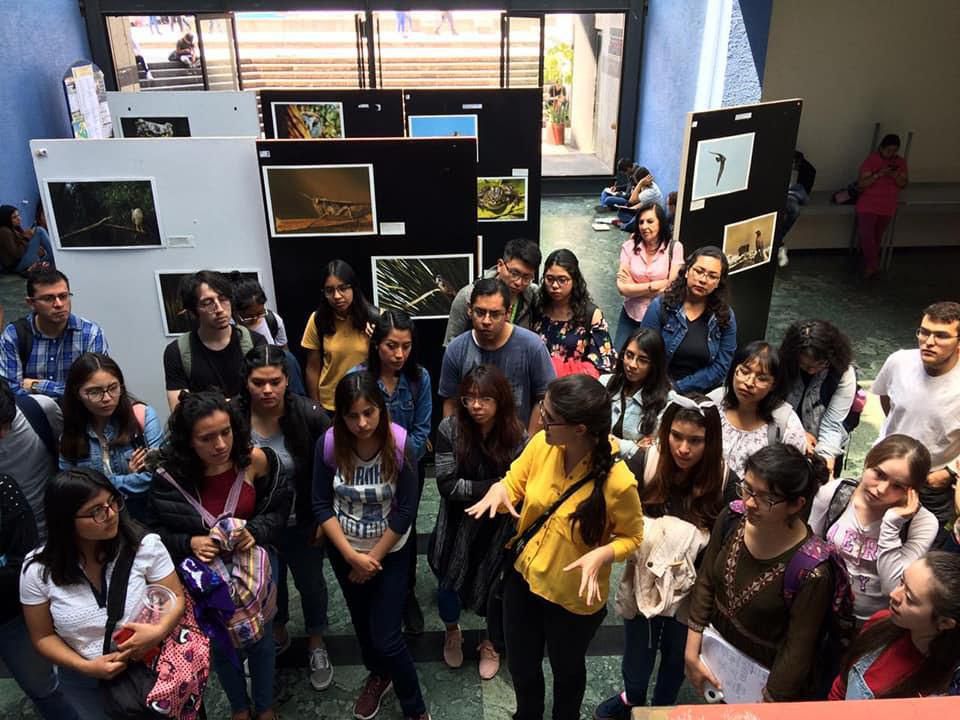
Tamara Maria Blazquez with elementary school children during one of Mexico City’s Wildlife shell … [+]
Tamara Maria Blazquez Haik
Her tragic discovery of a poisoned opossum lead Mexico City wildlife photographer and educator Tamara Blazquez Haik to find ways to better connect the city’s populace with its urban biodiversity.
Blazquez Haik who is also an IUCN-CEC member, Girls Who Click Ambassador and who has a background in wildlife rehabilitation and management, says she’s been aiming to teach citizens, especially children, about the wildlife species they coexist with on a daily basis.
“I have found that people tend to be more open to learning about wildlife and how they can pitch in with their conservation when they can see the true nature and essence of these animals through photography,” she says, “And children enjoy ludic and visual workshops in their schools as they are always excited to learn about animals.
But the project, called Mexico City’s Wildlife is rooted in a sad incident that outlines the disconnect between humans and animals in the city.
“This project started after founding a poisoned opossum near my home in Mexico City and realizing people need environmental education and science to be more accessible to them so they can at least stop harming wildlife because of ignorance and myths,” she says.
The project, pre-pandemic, has been putting on school workshops and talks and photographic exhibitions, as well as through different media outlets and social media.
“I have dedicated my career in conservation photography to urban wildlife, more specifically, Mexico City’s wildlife and have focused my work into environmental education for children and young teenagers in order to bring science and conservation science to them through photography and school workshops to make it all easier and more fun to learn about.”
Eureka Moment
Blazquez Haik was born and raised in the Mexican capital and it continues to have a fond place in her place, even after she has had the opportunity to travel all over the world as a wildlife photographer.
“I did have a childhood Eureka moment when I was 18 (I’m now 31) and after being inspired by conservationists and photographers, decided that I could help nature, as I always wanted to, through photography to inspire even more people and help them learn more about conservation and biology through my work,” she says.
But that path hasn’t been without its challenges.
“I once injured by ankle while on the field on a course about wildlife management, monitoring and tracking for conservation purposes — I injured it on the second day of the 5 day course,” she says adding that she still managed to stay in the field, placing traps and taking photos.
“I was very determined to learn all those skills no matter what as they would come in handy for future conservation projects and endeavors and life in the field is always tough, so you need to develop resilience and strength,” she says,” It was a great experience and it helped a lot in my conservation journey.

An urban opossum (Didelphis marsupialis) at an apartment complex in southern Mexico City. This … [+]
Tamara Blazquez Haik
Another Mexican with a passion for nature is conservation biologist Ximena Neri Barrios, who is helping to ensure the revival of Mexico’s wolf population, once extinct in the wild.
Barrios is also helping to lower the barriers of entry for young people, particularly women looking to enter into field biology and conservation.




